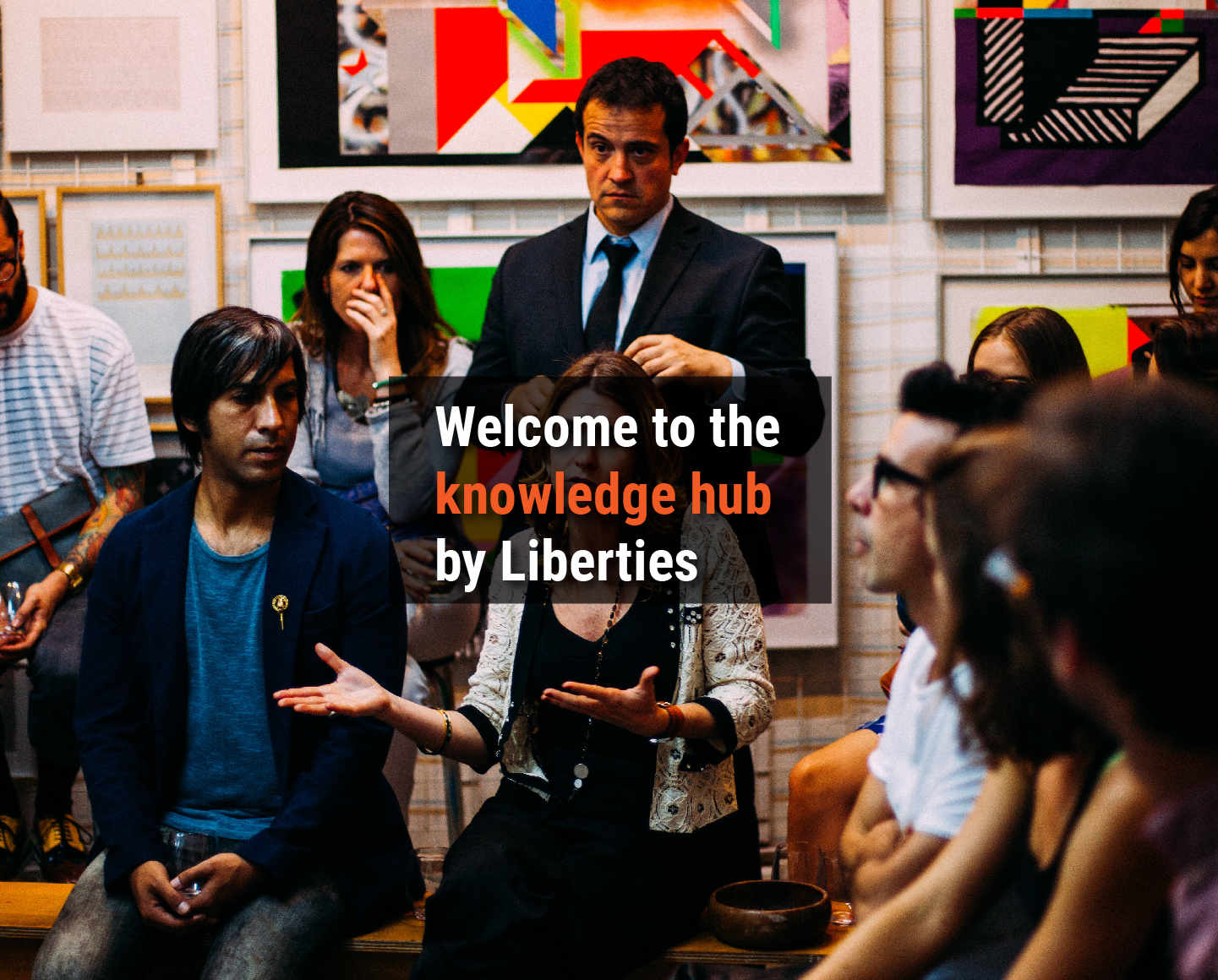
The knowledge hub is an e-learning platform that helps NGOs and civil society organisations to develop their teams' professional skills in various areas.
Here you will find free, easy-to-follow courses that will help make your advocacy work and campaigns more impactful.
Register for your first course today
Our Courses

This crash course will introduce you to some basic rules you can apply to talk about human rights-related causes more persuasively with a public audience. We will flag common communications habits that are working against you, explain why, and outline what to do instead. You will also learn what goes into a persuasive message and what structure you should follow.
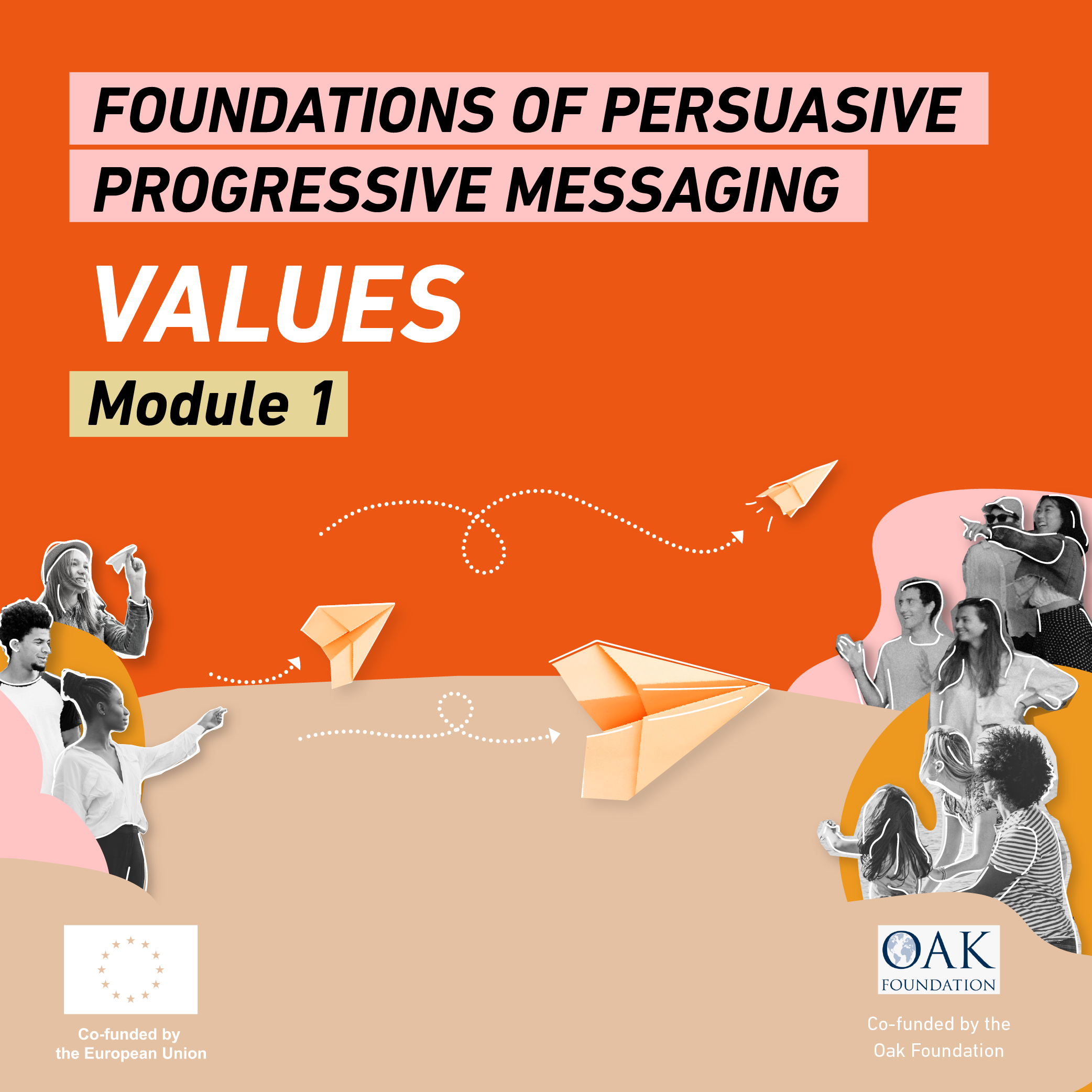
This seven-module foundation course will give you a solid grounding in how to create messages that shift public opinion in favour of progressive causes like human rights and environmental protection. You’ll learn how people form their opinions, how to avoid the most common messaging mistakes, how to create a persuasive campaign narrative and how to convert this into communications materials for social media.
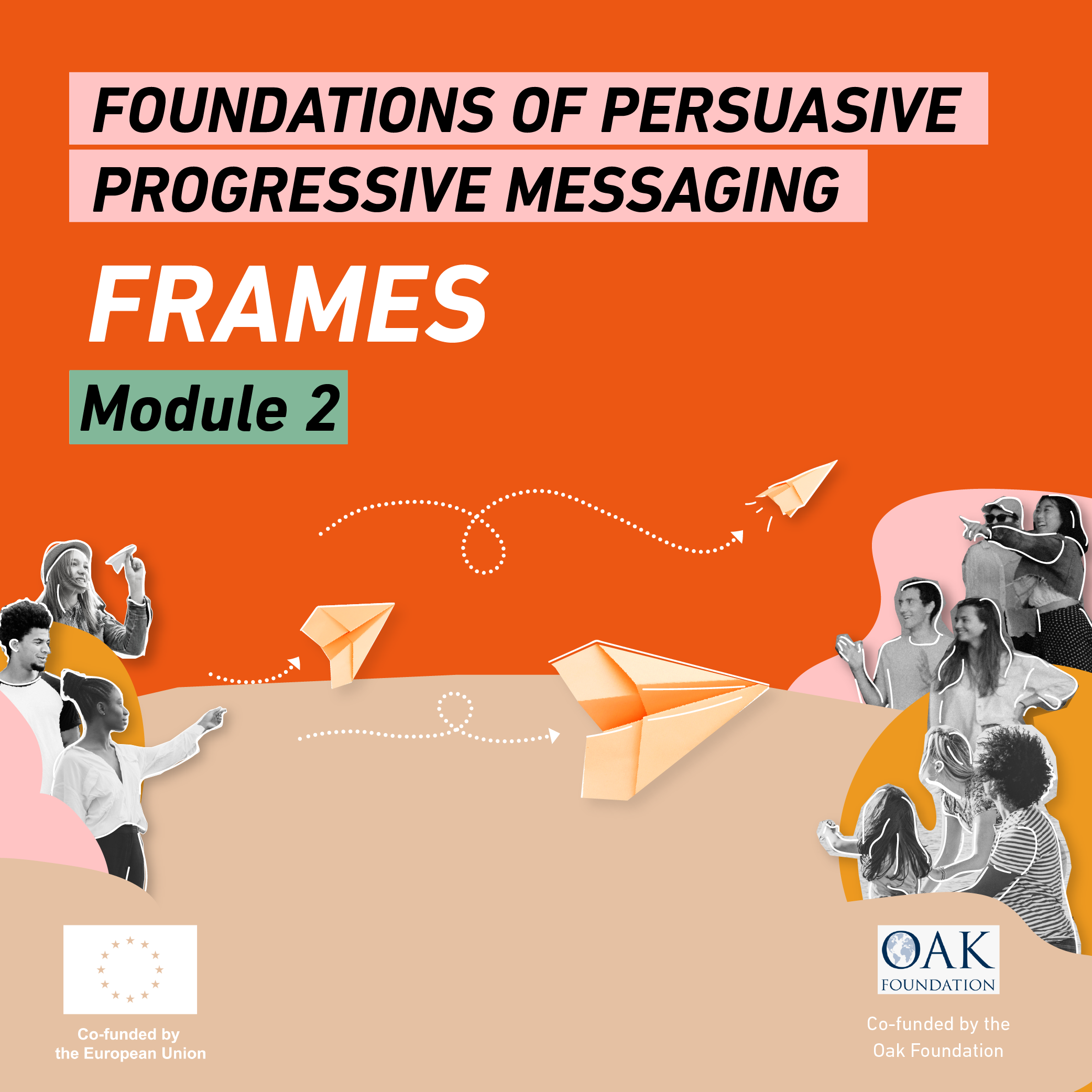
Welcome to Module 2 of this seven-module course, Foundations of Persuasive Progressive Messaging. In this module we’ll look at the role frames play in shaping our attitudes and opinions. You’ll learn what a frame is, that the frames your audience already have influence how they interpret what you tell them, that how different ways of framing the same objective situation can frames prompt different attitudes, and how to recognise your opponents’ frames. Please note that you should complete Module 1 of this course, on values, before beginning this module.
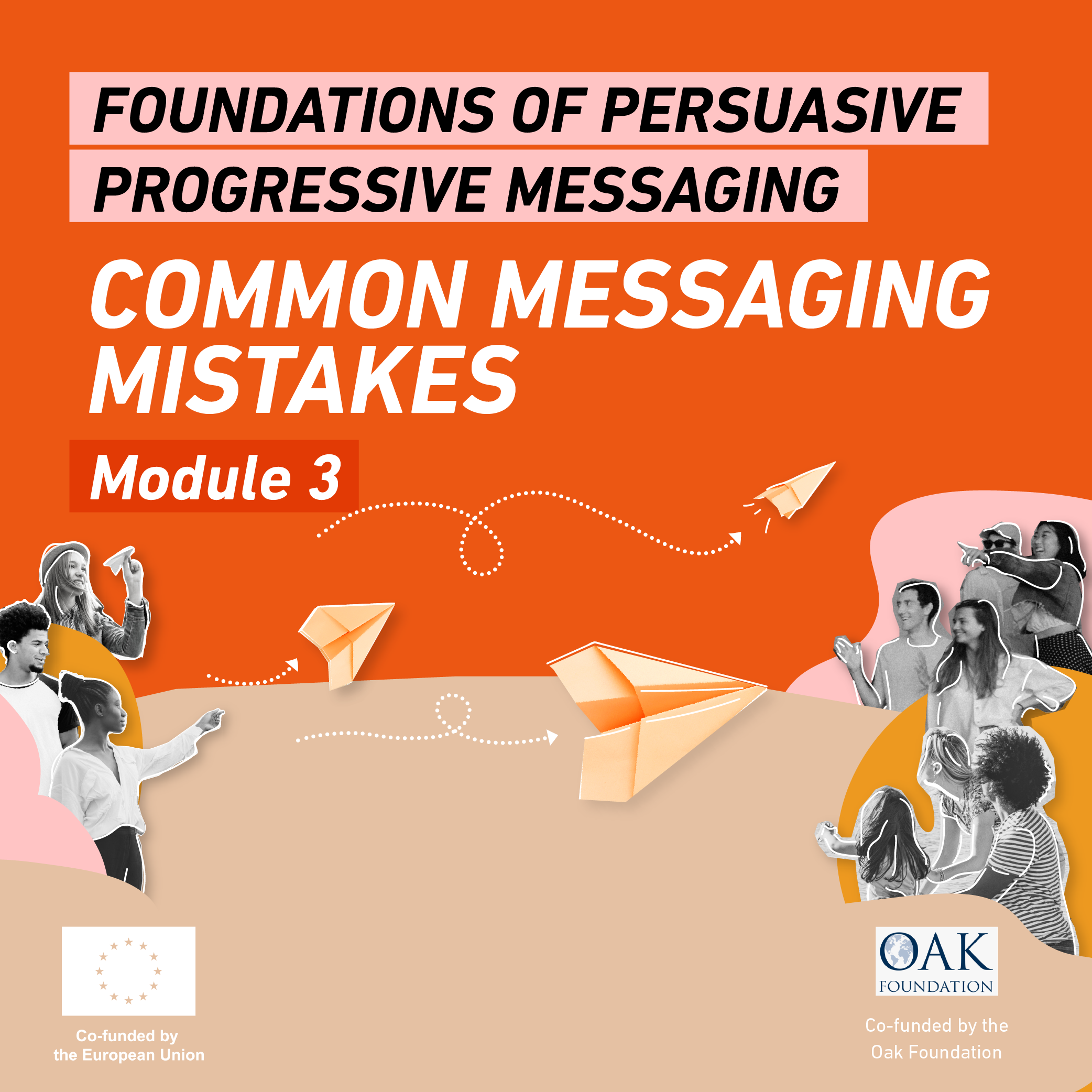
Welcome to Module 3 of Foundations of Persuasive Progressive Messaging. In this module, we’ll look at some of the most common messaging mistakes like myth-busting, using jargon or turning up the doom and gloom. These messaging habits can make our audience tune out or even turn against us, so we need to shake them off and do things differently.
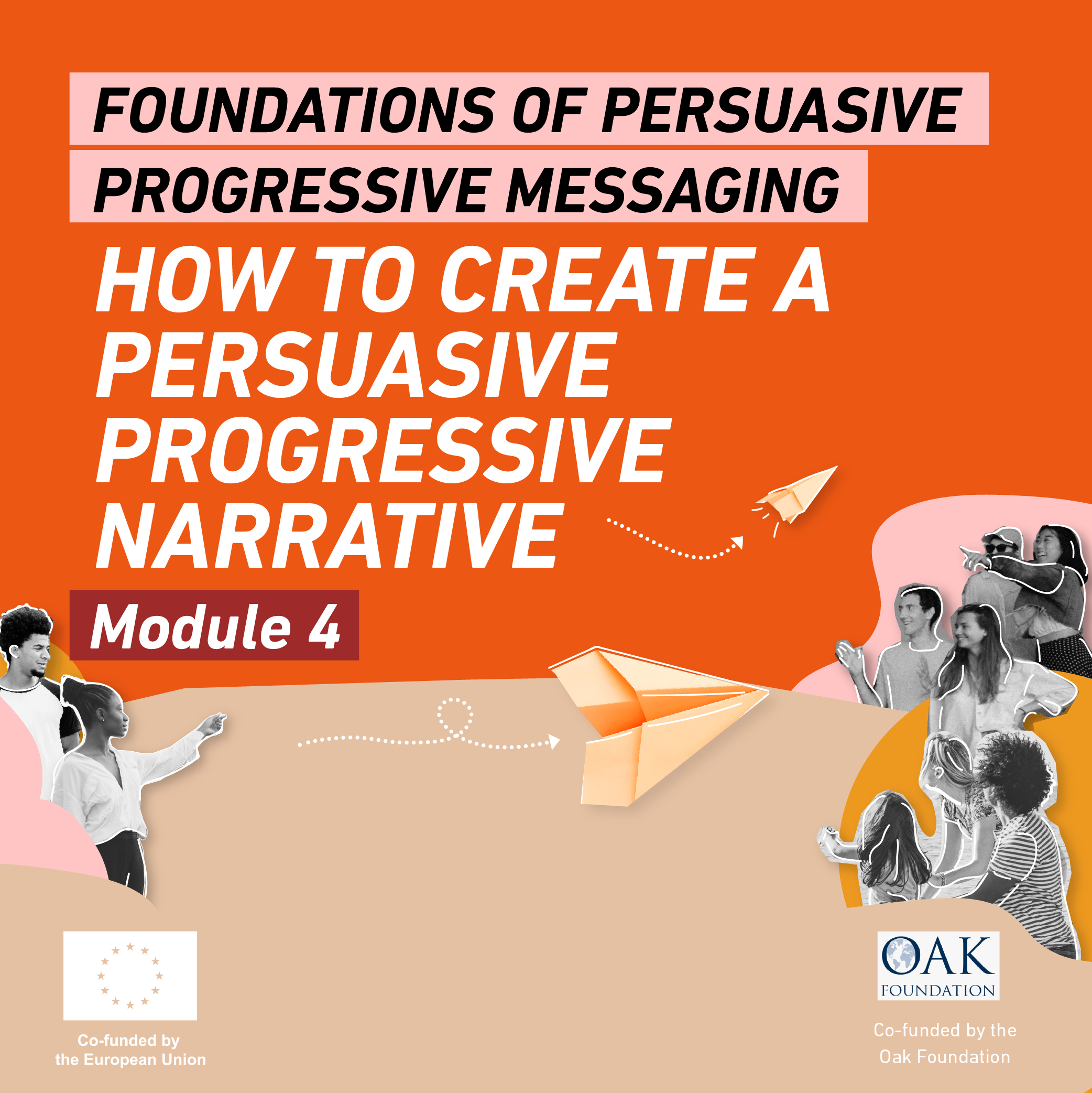
Welcome to Module 4 of Foundations of Persuasive Progressive Messaging. In this module, we’re going to look at how to create a persuasive progressive narrative. The videos in this module give a step-by-step guide to construct each part of a persuasive narrative, with plenty of examples and tips.
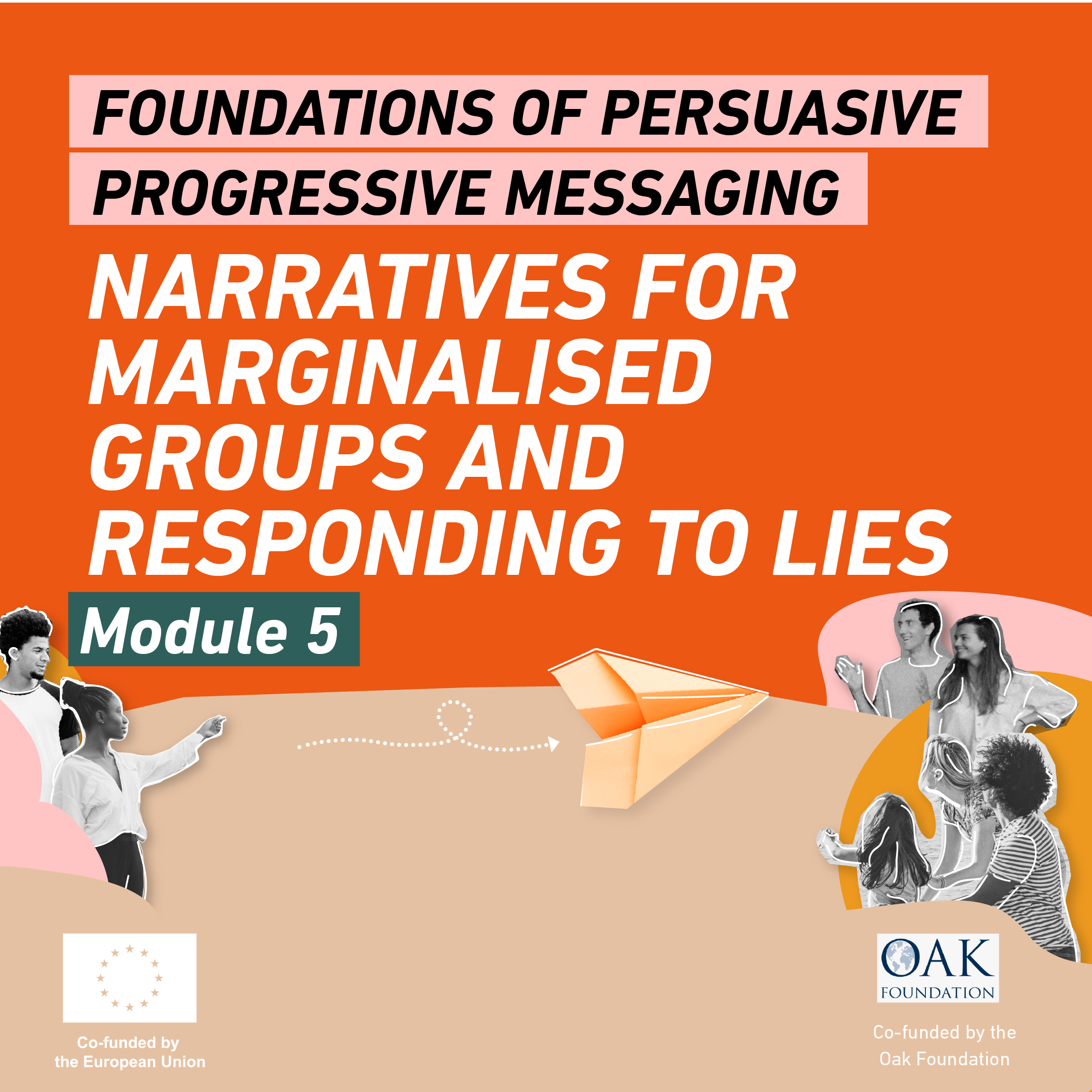
Welcome to Module 5 of Foundations of Persuasive Progressive Messaging. In this module, we’re going to look at two situations where you need to adapt your narrative slightly in order to be most persuasive: when you are communicating about marginalised groups, and when you are responding to lies from your opponents.
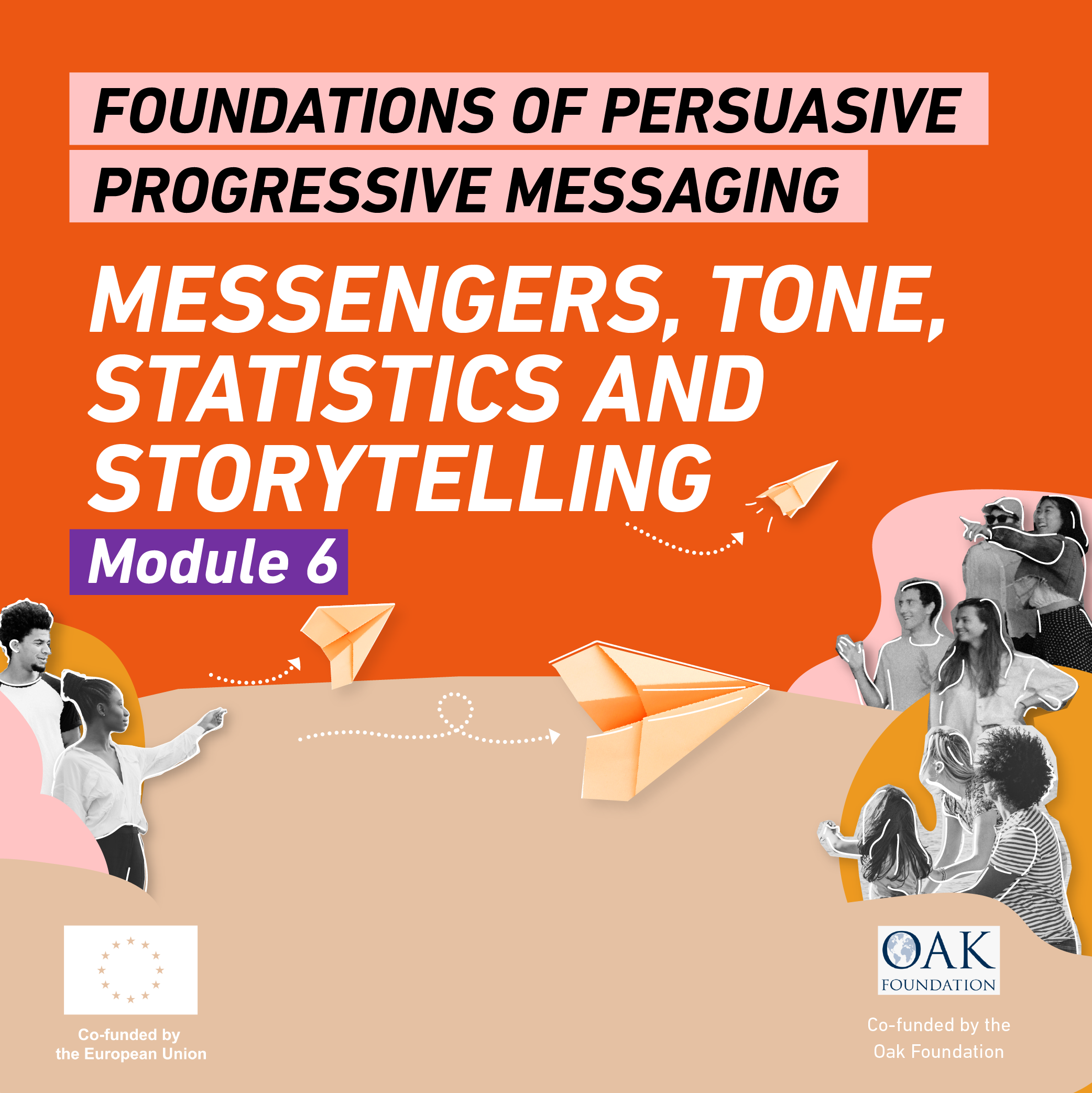
In this module, we’re going to be looking at some of the choices you need to make when you’re designing your communications materials. This includes how to pick the right messengers to carry your narrative, how you pick the right tone, and how to use statistics and storytelling correctly when transmitting your narrative.
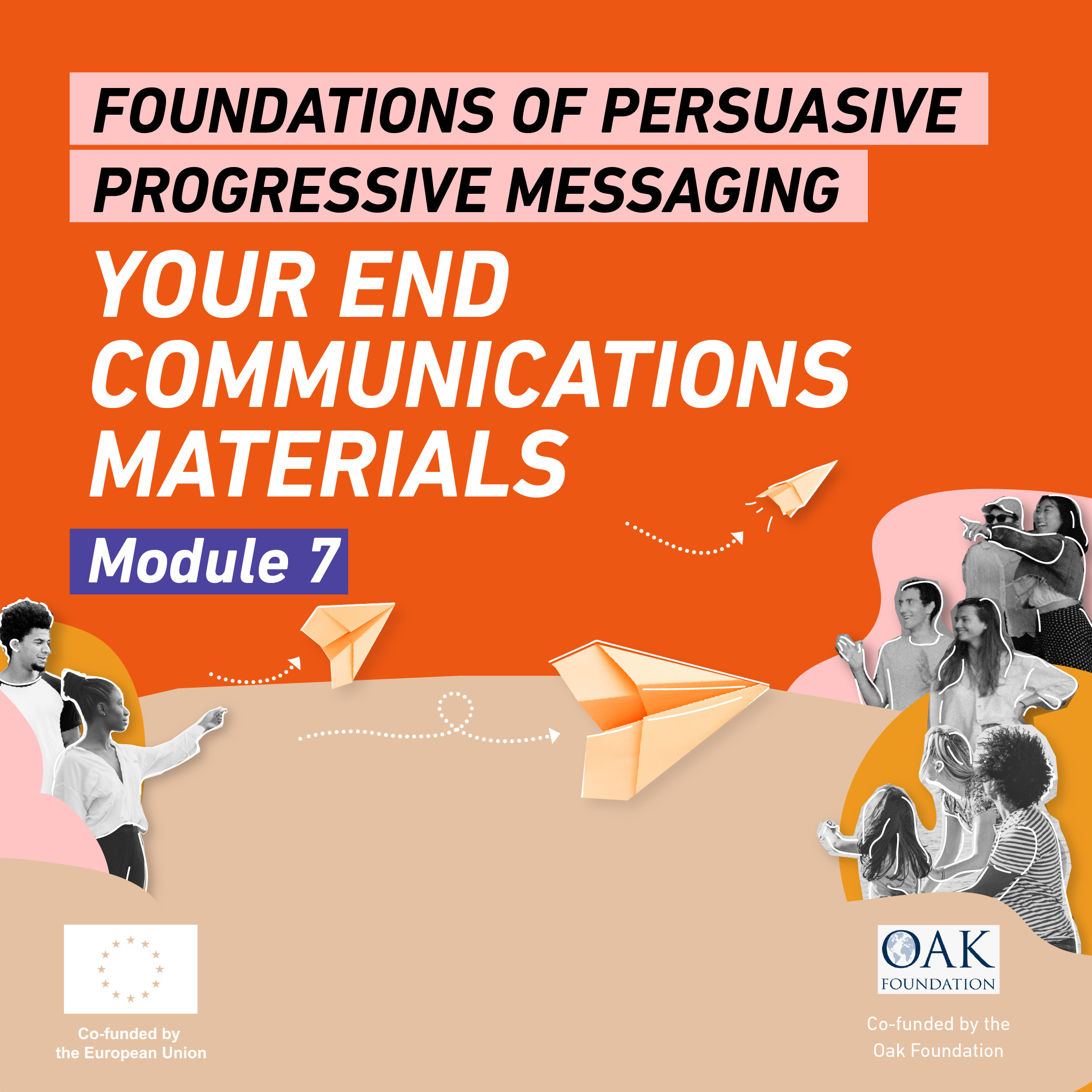
Welcome to module 7 of Foundations of Persuasive Progressive Messaging, ‘Your end communications materials’. In this final module of the course, we’re going to look at examples of materials from different campaigns so that you can get a feel of what it looks like to convert your narrative into the kinds of things you publish on social media.
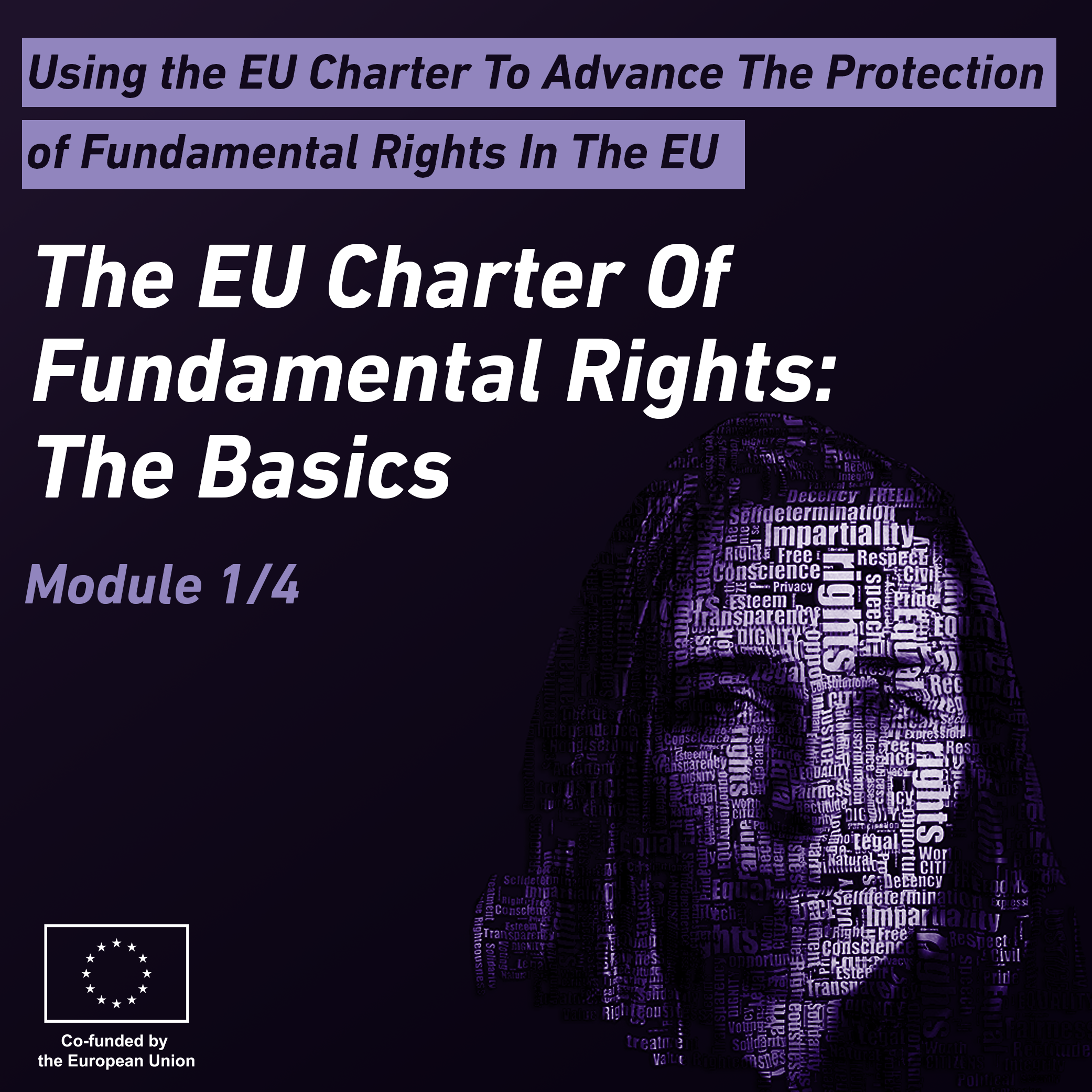
Module 1 of this course looks at the catalogue of rights contained in the EU Charter of Fundamental Rights.

This module takes an in-depth look at using the EU Charter to fight discrimination and intolerance.
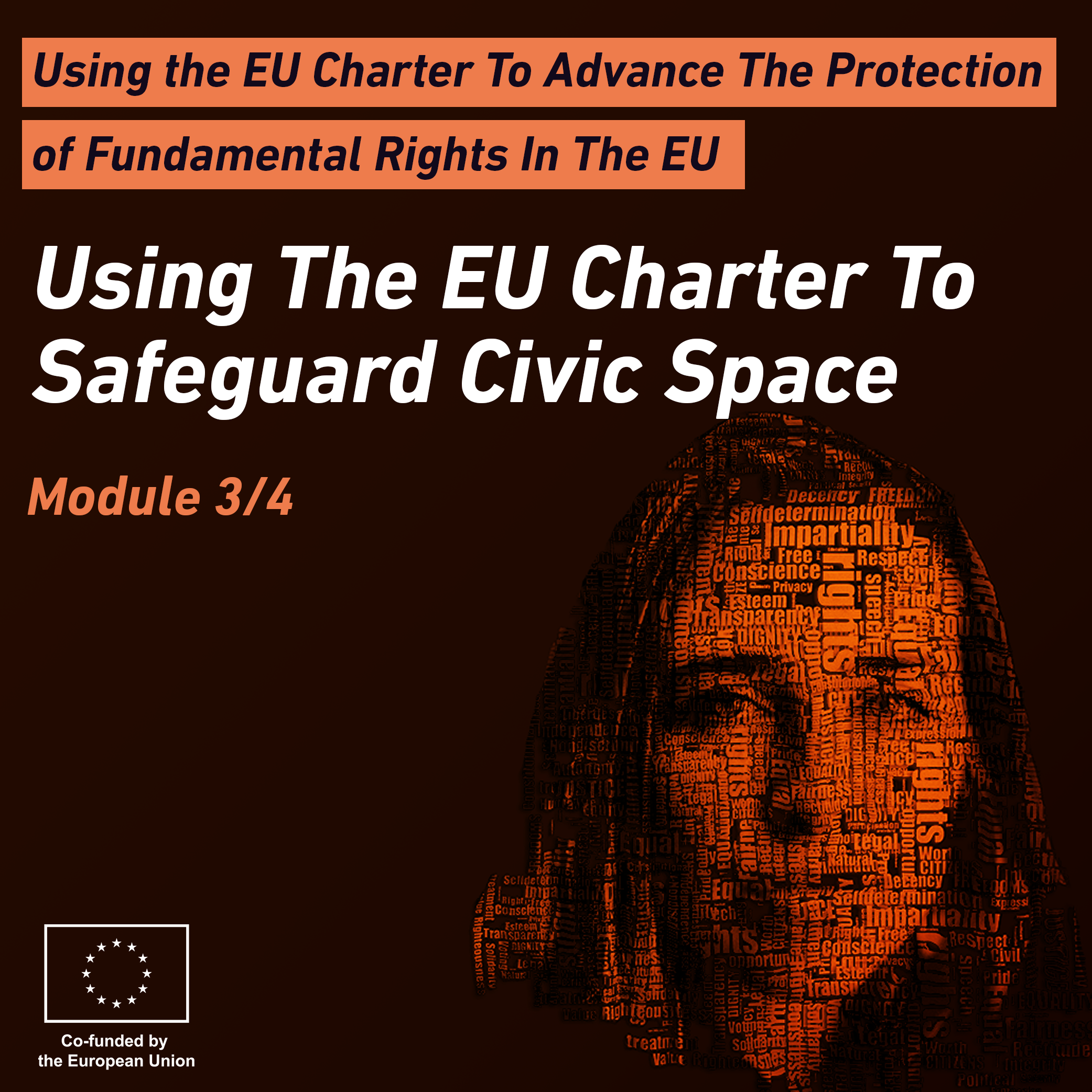
In the third module of this course, we will look at using the EU Charter to safeguard civic space.
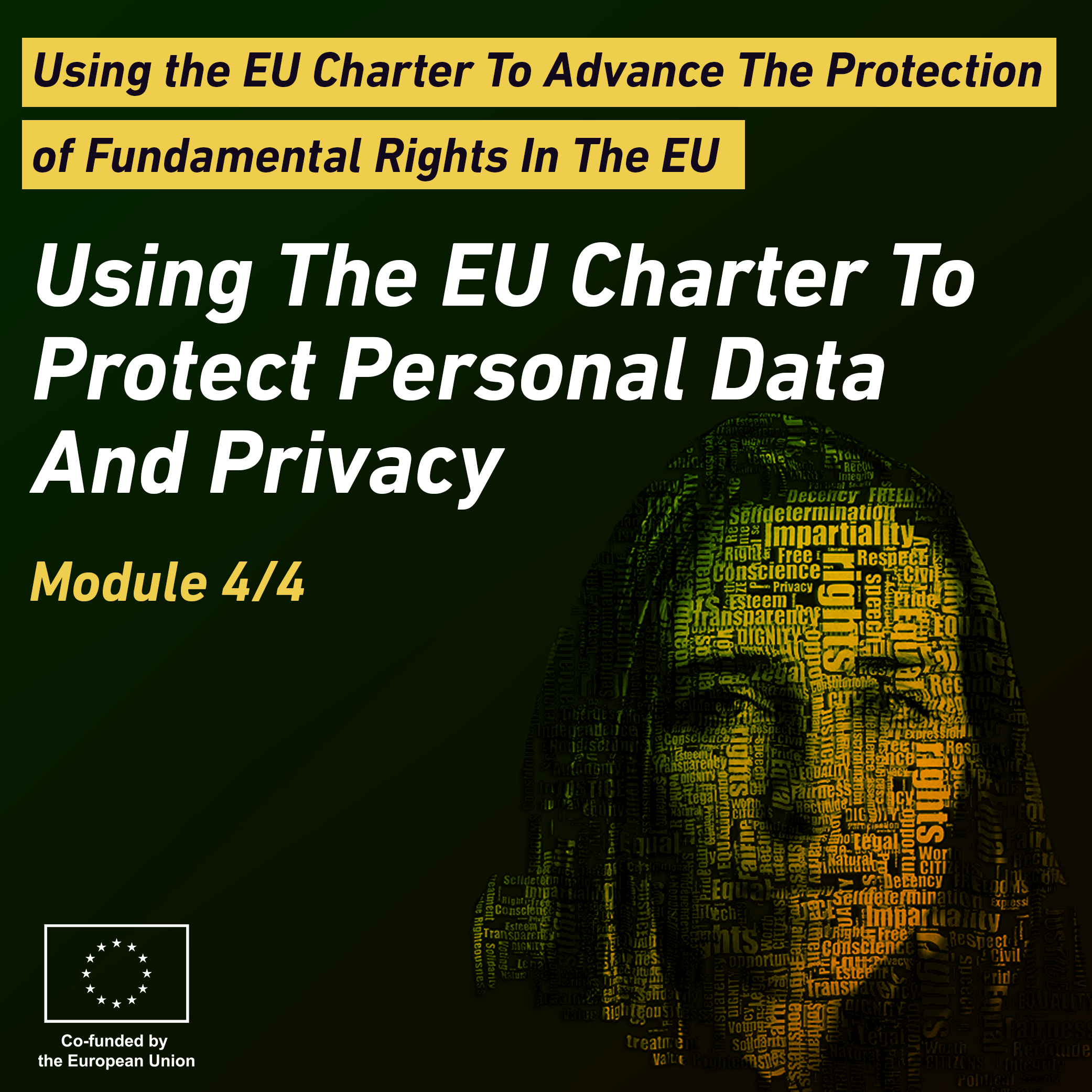
In the fourth module of this course, we will look at using the EU Charter to uphold privacy and data protection rights.

In this course for entry-level communicators, we will cover the so-called "G.A.M.E. plan" method, an easy way to build a strategic campaign plan around human rights issues.
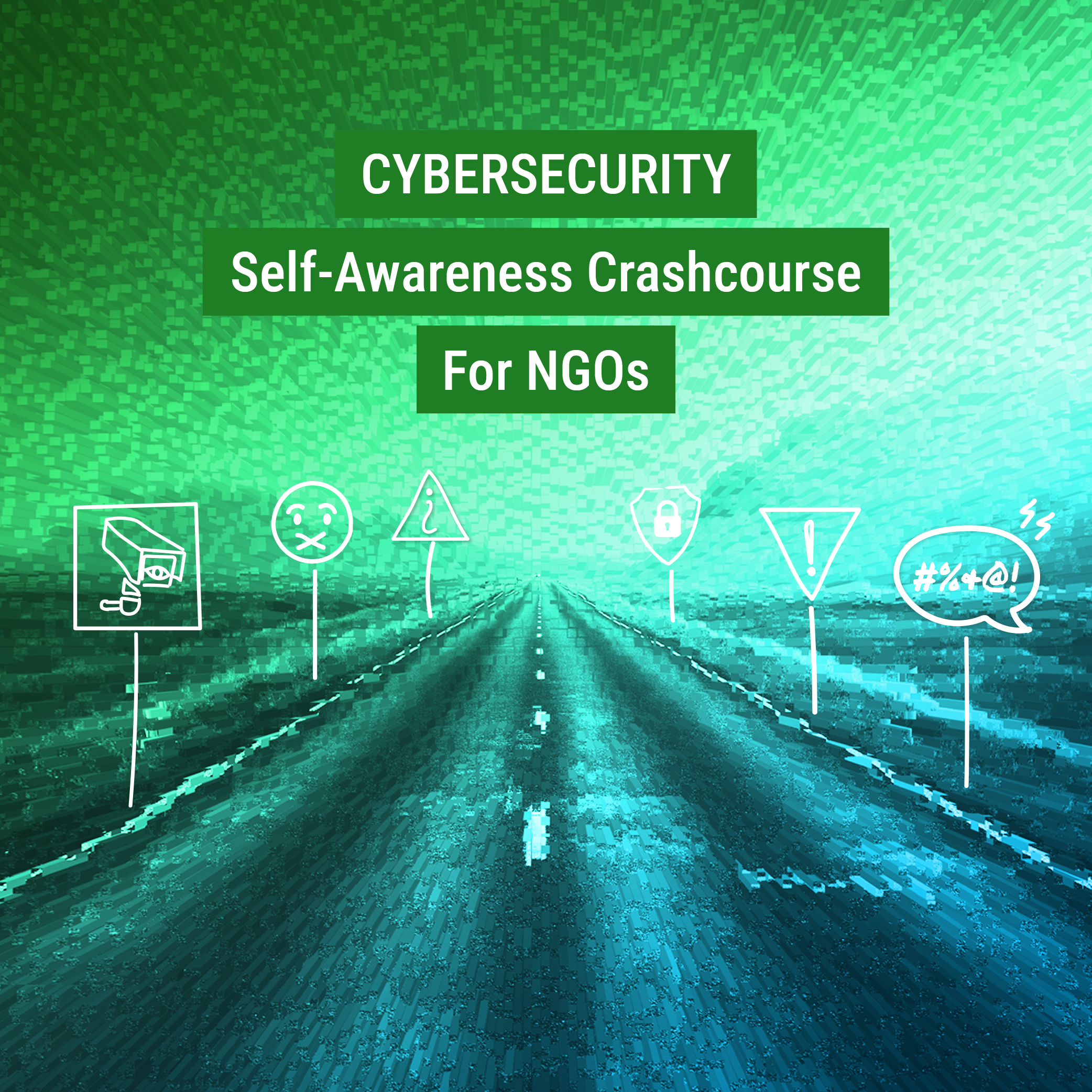
The purpose of this series is to increase general cybersecurity awareness.